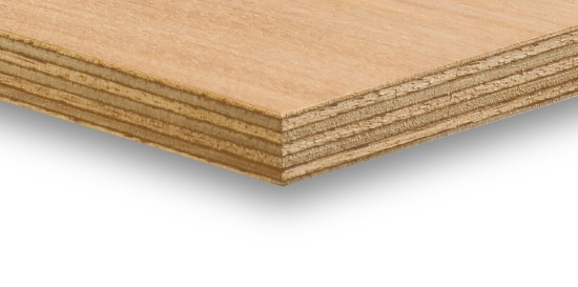What’s a home without good furniture? We love to spend time looking for fancy wooden cabinets, sleek modular kitchens, a perfectly crafted sofa, bed that’s comfortable and if you are short on space, takes care of your storage as well. But, how much do we know about the type and quality of wood used to build them? A general assumption is that plywood is what is used and there are varying grades and quality of plywood in your furniture. But that’s not true. Blockboard is also commonly used to build furniture. Let’s have a look at Blockboard vs Plywood - which of the two suit your furniture and budget the best.
Blockboard VS Plywood - Which is better for your Furniture and Budget?
1) Blockboard VS Plywood - Material
Plywood is a sheet material manufactured from thin layers or ‘plies’ of wood glued together with an adhesive. It has different types, based on the wood used to build it, such as hardwood, softwood, alternate core and poplar ply. Popular types of ply used are commercial ply and marine ply (also called BWP/BWR ply).
Blockboard consists of a core made of wooden strips or blocks, placed edge to edge between two layers of plywood, which are then glued together under high pressure. Generally, softwood is used in blockboards.

2) Blockboard VS Plywood - Uses
Different types of plywood are suited for different uses. Commercial ply, also referred to as MR grade plywood is used for most interior design work like TV units, cabinets, wardrobes, sofas, chairs etc. For areas susceptible to moisture, such as the bathroom and the kitchen, Marine ply, or BWP/BWR ply is used.
Blockboards are usually preferred when lengthy pieces or wooden boards are required while making furniture. This is because blockboard is stiffer and less prone to bending, unlike plywood. Blockboard is generally used for building long book shelves, tables and benches, single and double beds, settees, and lengthy wall panels. It is light in weight, and is used extensively for building interior and exterior doors.

3) Blockboard VS Plywood - Properties
Plywood is less susceptible to damage by water, and is resistant to cracking. It is uniform throughout its length and breadth, and can be easily lacquered, painted, veneered and laminated. However, long pieces of plywood tend to bend at the centre. Plywood will also splinter badly when cut.
Blockboard is more prone to water damage as it is known to retain moisture. It is stiffer than plywood and less prone to bending. It is dimensionally stable, and can withstand cracking. Unlike plywood it does not split on cutting, and is easy to work with. It is available in various finishes such as plastic laminates, wood veneers, etc. It can also be painted and polished. It is lighter than plywood as its core is made of softwood.
4) Blockboard VS Plywood - Maintenance and Life
Both plywood and blockboard are durable and can be cleaned easily. It is ideal not to expose either of them much to water unless using Marine Grade Plywood.
Both have a low maintenance cost.

5) Blockboard VS Plywood - Size and Cost
Commercial ply is available in thicknesses of 6mm, 12mm and 19mm. The range is Rs. 30 - Rs 60, for the different thicknesses. If you opt for high quality ply, the avg. price can go up to Rs. 80 for 19mm. For Marine ply, the avg. range is from Rs. 40 to Rs. 80 as per thickness, and can get more expensive if you opt for a high-quality ply.
Blockboards are available in thicknesses of 12mm, 15mm, 19mm, 25mm, 30mm, 35mm, 40mm, 45mm and 50mm. The price differs based on the size and thickness of the sheet, as well the type of wood used for the core. Blockboards range from Rs. 90 to Rs. 170 per sq. ft.
There you go! Both plywood and blockboards are suitable for different purposes, and are equally effective. The idea is to choose the right type of wood for the right kind of furniture! When in doubt, call one of Hipcouch’s experts!



